
MOLECULAR IMAGING AND BIOLOGY
Scope & Guideline
Connecting Science and Imaging for Better Health Outcomes
Introduction
Aims and Scopes
- Molecular Imaging Techniques:
The journal emphasizes the development and application of various molecular imaging techniques, including PET, MRI, CT, and optical imaging, to visualize biological processes at the molecular and cellular levels. - Radiotracer Development:
A core focus is on the design, synthesis, and validation of new radiotracers and imaging agents, particularly those targeting specific biological pathways or disease markers. - Preclinical and Clinical Applications:
The journal publishes research that translates preclinical findings into clinical practice, exploring how molecular imaging can guide diagnosis, treatment planning, and monitoring of various diseases. - Theranostics:
A significant area of interest involves theranostics, where imaging and therapy are combined, allowing for personalized treatment strategies based on imaging findings. - Biomarkers and Disease Mechanisms:
The journal aims to highlight studies that identify and validate imaging biomarkers associated with disease mechanisms, progression, and treatment response. - Innovative Imaging Technologies:
It also covers advancements in imaging technologies, such as hybrid imaging modalities and novel imaging probes, which enhance the sensitivity and specificity of imaging assessments.
Trending and Emerging
- Machine Learning and AI in Imaging:
There is a significant increase in studies utilizing machine learning and artificial intelligence techniques to enhance image analysis, improve diagnostic accuracy, and predict treatment outcomes. - Targeted Molecular Imaging Probes:
Recent publications show a trend towards the development of highly specific targeted molecular imaging probes that can visualize particular cellular processes or disease states, enhancing the precision of diagnostic imaging. - Theranostic Applications:
The integration of imaging and therapeutic strategies (theranostics) is gaining momentum, with more studies exploring how imaging can guide therapy decisions and monitor treatment responses. - Immuno-PET and Immuno-Oncology:
There is a notable increase in research focusing on immuno-PET techniques and their applications in oncology, particularly for tracking immune responses and evaluating novel immunotherapeutic agents. - Advancements in Hybrid Imaging Technologies:
The rise of hybrid imaging technologies, combining modalities like PET/MRI and PET/CT, is becoming more prevalent, allowing for more comprehensive assessments of biological processes. - Real-Time Imaging Techniques:
Emerging studies are increasingly focusing on real-time imaging methods that enable dynamic monitoring of biological processes, particularly in the context of cancer treatment and cellular therapies.
Declining or Waning
- Traditional Imaging Modalities:
There seems to be a reduction in the publication of studies solely focused on traditional imaging methods without the integration of molecular or biological insights, indicating a shift towards more advanced and hybrid approaches. - Basic Imaging Methodologies:
Research centered around basic imaging techniques, such as standard CT or MRI without molecular imaging applications, is becoming less common, as the field evolves towards more innovative and specific applications. - Single-Modal Imaging Studies:
The prevalence of studies focusing exclusively on single-modal imaging techniques is declining, as the field increasingly favors multimodal approaches that provide more comprehensive insights into biological processes. - Conventional Radiomics:
While radiomics remains a significant area, there is a noticeable shift away from conventional radiomics methodologies towards more integrated and machine learning-based approaches that enhance predictive modeling. - Non-targeted Imaging Agents:
The use of non-targeted imaging agents in preclinical and clinical studies appears to be decreasing, with a stronger emphasis on targeted agents that provide higher specificity and relevance to particular diseases.
Similar Journals
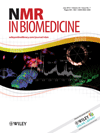
NMR IN BIOMEDICINE
Pioneering Research at the Intersection of NMR and BiomedicineNMR in Biomedicine is a prestigious journal published by Wiley that has been at the forefront of advancing research in the integration of Nuclear Magnetic Resonance (NMR) techniques within the realms of biomedicine since its establishment in 1988. With its ISSN 0952-3480 and E-ISSN 1099-1492, this journal focuses on the application of NMR across various scientific disciplines, including Molecular Medicine, Radiology, Nuclear Medicine and Imaging, and Spectroscopy. The journal is classified in the Q1 and Q2 quartiles as of 2023, showcasing its significant impact and contribution, particularly in Radiology and Spectroscopy, where it ranks in the top tier of its fields. The Scopus ranks reflect its esteemed position, with notable placements such as #70/333 in Radiology and #25/76 in Chemistry Spectroscopy. While Open Access options are not available, the journal remains committed to providing high-quality, peer-reviewed research that fosters innovation and collaboration within the scientific community. Researchers, professionals, and students are encouraged to explore the cutting-edge findings presented in this journal, as it continues to shape the future of biomedical applications of NMR.

Hong Kong Journal of Radiology
Transforming Insights into Impactful Radiology PracticesHong Kong Journal of Radiology, an esteemed publication of the Hong Kong Academy of Medicine Press, serves as a vital platform for disseminating innovative research in the field of radiology, nuclear medicine, and imaging. Established in 2011 and operating under an Open Access model since 2018, this journal not only promotes the sharing of knowledge but also enhances global accessibility to cutting-edge studies. With its ISSN 2223-6619 and E-ISSN 2307-4620, the journal strives to engage a diverse audience ranging from experienced professionals to aspiring scholars in the medical imaging domain. Despite its current ranking in the Q4 quartile of the Scopus category for radiology, the journal is committed to improving its standing by featuring high-quality research that addresses pressing issues in the field. The journal's convergence from 2011 to 2024 reflects its ongoing dedication to fostering academic excellence and encouraging collaborative discourse among researchers and practitioners globally. Located in Hong Kong, the journal plays a significant role in shaping the future of radiology education and practice in China and beyond.

JOURNAL OF CELLULAR AND MOLECULAR MEDICINE
Unlocking the Secrets of Life at the Cellular LevelJournal of Cellular and Molecular Medicine, published by Wiley, stands at the forefront of research excellence in the fields of cell biology and molecular medicine. With an impressive impact factor reflected in its 2023 Q2 category ranking for both Cell Biology and Molecular Medicine, this journal provides a vital platform for researchers and professionals alike, fostering innovative findings and groundbreaking discoveries since its inception in 2000. Maintaining an open access policy since 2012, the journal ensures that knowledge is freely disseminated, promoting collaboration and progress across the scientific community. With robust rankings in the Scopus database, including a position within the top 85th percentile in Molecular Medicine, the journal remains committed to advancing understanding of cellular functions and their implications in health and disease. Researchers, professionals, and students will find a treasure of high-quality articles and reviews that not only catalyze academic dialogue but also contribute significantly to practical applications in the life sciences.
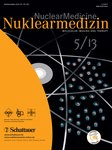
NUKLEARMEDIZIN-NUCLEAR MEDICINE
Transforming Healthcare through Nuclear Medicine Discoveries.NUKLEARMEDIZIN-NUCLEAR MEDICINE is a prestigious journal published by Georg Thieme Verlag KG, focusing on pivotal advancements in the fields of Nuclear Medicine, Radiology, and Imaging. Established in 1959, this journal has served as a critical platform for disseminating innovative research, reviews, and clinical guidelines until its anticipated convergence in 2024. With an ISSN of 0029-5566 and an E-ISSN of 2567-6407, NUKLEARMEDIZIN is acknowledged in the academic community as a Q3 category journal within Medicine (miscellaneous) and Radiology, Nuclear Medicine, and Imaging as of 2023, highlighting its ongoing contribution to the interdisciplinary dialogue in healthcare. Although the journal does not currently offer open access, it remains accessible to professionals and students through various academic databases, ensuring that cutting-edge knowledge in this growing field is shared widely. Researchers interested in the latest methods and technologies in Nuclear Medicine will find NUKLEARMEDIZIN a valuable resource for enhancing their work and understanding the complexities of modern imaging modalities.

Indian Journal of Radiology and Imaging
Pioneering Research for Tomorrow's Imaging SolutionsThe Indian Journal of Radiology and Imaging, published by THIEME MEDICAL PUBL INC, is a prominent open-access journal in the field of radiology, nuclear medicine, and imaging. Since its inception in 1984, the journal has provided a platform for researchers, professionals, and students to disseminate innovative research and findings in diagnostic imaging. With a growing impact factor and categorized in the Q3 quartile according to the 2023 rankings, it ranks among the notable journals in its field, although it currently stands at Rank #244 out of 333 within Scopus, reflecting its competitive position in radiology research. The journal, accessible to a global audience since 1999, aims to advance the knowledge and practice in imaging by inviting diverse contributions, including original research articles, reviews, and case reports. Its commitment to open-access publication fosters wider dissemination and collaborative discourse, crucial for the dynamic landscape of medical imaging.

Revista Espanola de Medicina Nuclear e Imagen Molecular
Exploring the Future of Imaging in HealthcareRevista Española de Medicina Nuclear e Imagen Molecular, published by Elsevier España SLU, stands as a vital resource in the field of Radiology, Nuclear Medicine, and Molecular Imaging. With an ISSN of 2253-654X, this journal is committed to disseminating high-quality research and advancements in clinical practices, aiming to bridge the gap between theoretical research and application in healthcare. Operating since 2012, it features a robust archive of peer-reviewed articles and case studies, although it currently holds a Q4 ranking in the Scopus category, indicating significant potential for growth and influence within the academic community. The journal is indexed in Scopus, with a rank of 255 out of 333, placing it in the 23rd percentile, which underlines the need for increased contributions from researchers eager to enhance its standing. While it is not an open-access journal, its availability through libraries and institutions ensures that a wide audience can access critical findings and innovations in the rapidly evolving field of nuclear medicine. As we look towards the convergence period from 2012 to 2024, Revista Española de Medicina Nuclear e Imagen Molecular aspires to fortify its role as a cornerstone for collaboration and advancement in nuclear imaging and radiology.
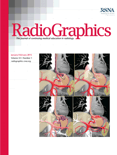
RADIOGRAPHICS
Transforming Radiological Practices through KnowledgeRADIOGRAPHICS, published by the Radiological Society of North America (RSNA), is a premier academic journal dedicated to the field of radiology, nuclear medicine, and imaging. With an impressive impact factor and recognition in the top quartile (Q1) of both Medicine (miscellaneous) and Radiology, Nuclear Medicine and Imaging categories, RADIOGRAPHICS stands out as a leading platform for disseminating high-quality research and clinical findings. Since its inception in 1985 and projected to run until 2024, the journal has consistently provided essential insights into cutting-edge imaging techniques and advancements in radiological practices, making it invaluable for professionals, researchers, and students alike. Although it does not offer open access, the journal continues to flourish with a robust reputation, ranked 35th in its field according to Scopus, placing it within the 89th percentile of its category. With an unwavering commitment to enhancing the understanding and application of radiological sciences, RADIOGRAPHICS remains a pivotal resource for advancing knowledge and expertise within the medical community.
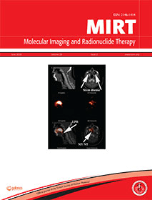
Molecular Imaging and Radionuclide Therapy
Elevating the standards of molecular imaging research.Molecular Imaging and Radionuclide Therapy is an esteemed academic journal published by GALENOS PUBL HOUSE, dedicated to advancing the fields of radiology, nuclear medicine, and imaging. Since its inception, this Open Access journal has facilitated the dissemination of high-quality research and innovative practices in molecular imaging and radionuclide therapy, making it a vital resource for researchers, professionals, and students alike. With an ISSN of 2146-1414 and an E-ISSN of 2147-1959, the journal has established its presence globally while specifically catering to the Turkish academic and medical community. As of 2023, it is ranked #241/333 in the Radiology, Nuclear Medicine and Imaging category on Scopus, holding a respectable Q3 quartile ranking. The journal serves as a platform for sharing impactful findings from 2017 to 2024, reinforcing its commitment to open access since 2011. With a dedication to enhancing the knowledge base in molecular imaging and therapy, it remains an important conduit for scholarly communication and collaborative research developments in this dynamic field.

BIOLOGICAL PROCEDURES ONLINE
Fostering Collaboration in the Evolving World of Biology.BIOLOGICAL PROCEDURES ONLINE is a premier open-access journal published by BMC, dedicated to advancing the fields of biochemistry, genetics, and molecular biology. With its electronic ISSN 1480-9222 and a strong commitment to accessibility since 2009, this journal provides a vital platform for researchers and scholars to disseminate their findings and foster collaboration within the scientific community. Based in the United Kingdom, this journal has garnered an impressive reputation, achieving Q1 status in the 2023 category rankings, with notable inclusion in the Scopus rankings, placing it in the 86th percentile among 221 peer journals in the general biochemistry, genetics, and molecular biology domain. It covers a broad range of topics, ensuring coverage of the latest advancements and methodologies in biological procedures, making it an essential resource for academics, practitioners, and students alike. Researchers are encouraged to submit their innovative work and contribute to the ongoing dialogue in this dynamic and ever-evolving field.
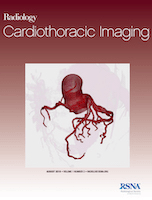
Radiology-Cardiothoracic Imaging
Elevating Standards in Cardiothoracic ImagingRadiology-Cardiothoracic Imaging, published by the Radiological Society of North America (RSNA), is a leading peer-reviewed journal dedicated to advancing knowledge in the field of cardiothoracic radiology. With an ISSN of 2638-6135 and a remarkable 2023 Scopus ranking of #5 out of 333 in its category, the journal stands out in the Q1 tier for Radiology, Nuclear Medicine, and Imaging, showcasing its significant impact and high-quality research contributions. The journal is committed to providing an open platform for innovative research, insightful reviews, and clinical studies that address the complexities of cardiothoracic imaging, thereby facilitating the enhancement of diagnostic and therapeutic strategies. Operating out of Oak Brook, Illinois, the journal aims to engage a diverse audience of researchers, professionals, and students, fostering collaboration and knowledge exchange within this vital area of radiological science. With a convergence of years extending from 2019 to 2024, Radiology-Cardiothoracic Imaging remains at the forefront of emerging trends and findings, making it an essential resource for anyone passionate about the evolving landscape of cardiothoracic imaging.